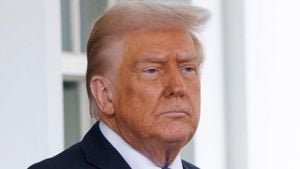The Brazilian federal government began payments for the Pé-de-Meia program on February 25, 2025, providing financial support to high school students who successfully completed their studies. This initiative aims to combat school dropout rates and uplift students from low-income families, with President Luiz_Inácio Lula da Silva positioning the program as part of his broader educational strategy.
Pé-de-Meia, established to bolster educational attainment, will benefit approximately four million students nationwide, with each qualifying student receiving R$ 1,000 upon completing their year. Additional financial incentives of R$ 200 are available for those who also participated successfully in the National High School Exam (Enem).
During his announcement, President Lula emphasized the necessity of investing in youth education. “This is a commitment because if we don’t invest in young people when they need it, we will invest later to combat organized crime. I prefer to invest in classrooms,” Lula stated. His comments underline the administration's preference for proactive educational funding over reactive social policies.
Minister of Education Camilo Santana echoed Lula’s sentiments, describing the program as more than just financial aid. “The Pé-de-Meia program allows students to earn up to R$ 9,200 as incentives, not only securing their school attendance but also acting as educational savings,” Santana relayed. His remarks reflect the dual aim of the initiative to both retain students within the educational system and empower them financially.
The payment system is staggered by birth month: students born from January to June received payments on the 25th, whereas those born from July to December got their funds on the 26th. This scheduling helps streamline the distribution process, ensuring smooth access to these important funds.
For students who completed the first or second year, the payments are slated for February 27, regardless of their birth month. It's worth noting, too, the stipulation surrounding consistent school attendance—students must maintain an average attendance of 80% to qualify for the payments. This criterion aims to reinforce the educational commitment.
This initiative is not merely about financial transfer; it is set against the backdrop of significant challenges within Brazil’s educational framework, where around 480,000 students leave public schools annually, primarily due to financial pressures. The Pé-de-Meia program aims to disrupt this trend, providing the necessary economic support to sustain educational pursuits.
Individual stories of beneficiaries highlight the program's impacts. Take Renzo Renato Cosmo, for example. At 17, and now receiving the monthly R$ 200, he narrates how the program has brought him independence. “Before, I had to ask my mom for money for school supplies. Now, I can buy them myself,” Renzo shared. His experiences reflect the broader impact of Pé-de-Meia on personal financial management among youth.
Sofia Suzart, also 15, finds similar empowerment through the initiative. “Now I think carefully before spending and try to save for college,” she emphasized, showing the thoughtful engagement young students are starting to have with financial planning.
Educators, too, recognize the positive shifts stemming from Pé-de-Meia. Aline Maia, vice-director at Renzo's school noted, “With the program, students are motivated to stay and complete their education. It alleviates their need to abandon school to take on work responsibilities.” Such statements reiterate the program's value not just for students but for society by decreasing dropout rates and enhancing future employment prospects.
Despite the benefits, the program isn't absent of criticism. Legal experts have expressed concerns over the mandatory execution of such initiatives outside the official budgetary law frameworks. The Brazilian Court of Audit (TCU) had previously blocked resources associated with Pé-de-Meia due to compliance issues with fiscal responsibility laws. The government was instructed to find legal pathways to allocate these funds effectively.
Economist Rita Mundim commented on investor reactions to Lula’s announcement. The market showed signs of stress, indicating fear of more spending without clear revenue streams. “If Lula perceives macroeconomics as trivial, we might be entering dangerous territory,” Mundim posited, alluding to the connection between government fiscal policy and social stability.
Looking forward, the government plans to expand Pé-de-Meia to include students from lower grades and integrate it with other social programs for comprehensive educational support. Discussions are underway about introducing additional incentives for engaging students involved in extracurricular activities as well.
The Pé-de-Meia program embodies both educational and economic significance, promoting social equity through investment. By directly addressing the economic challenges faced by families, it hopes to contribute to sustained educational engagement, which is fundamental to Brazil’s future prosperity.



